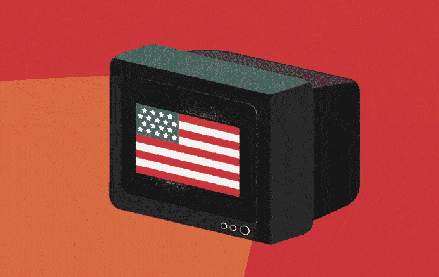How brands and agencies are navigating the political ad war for 2024’s elections

Maria Pousa, Chief Growth Officer, Digilant
This year will see a hotly contested election cycle in the U.S., but that’s not all — pivotal and contested elections have been happening all over the globe — almost 49% of the world will vote this year.
In the U.S., from a media-spend perspective, the 2024 election cycle is expected to be record-breaking, and in a highly polarized society, every vote counts. As seen in previous election cycles, misinformation, fake news, ad fraud and the unethical use of data can be expected to rise. This year, marketers are also adding AI to their challenges to navigate.
Advertisers risk unwittingly aligning their brands with undesirable content in these unpredictable environments. At the same time, brands and agencies are powerful participants in this industry — and how they spend their media dollars matters more than ever.
While opting out is not an option for most advertisers, agencies and brands are finding ways to build resilience and prepare for a turbulent media cycle. In addition to understanding the challenges of 2024, brands and agencies are working to safeguard their media buys, which will be critical to advertising responsibly and mitigating reputational risks.
Identifying the impact of political issues helps steer ad presence
It’s essential that marketers monitor their brands’ position relative to global issues and news cycles. For some, politics and societal events are part of the very fabric of their customer promises, while for others, not so much.
Understanding just how much of an activist role a company should take is important, as it will influence how and where media dollars ultimately flow.
For example, while it can be tempting to withdraw from advertising around any news content this year for brand safety reasons, essentially de-funding reputable news outlets isn’t exactly the way to build a stronger media landscape for the future. Brands will need to wade through tough topics.
Testing strategies, geographies and voter preference is vital for campaign success
Before September, brands and agencies can test creative and voting preferences within different geos to learn what’s working and what isn’t, building campaigns with purpose.
Once the official election cycle kicks into high gear, it may not be possible to be creative or test new things. As such, the summer is an ideal time to see how campaigns are performing. Talking to partners about real visibility into media placements at a granular level provides brands and agencies with an invaluable opportunity.
Brand-safe, scalable environments like TV and DOOH offer additional safeguards
Associations like the ANA and OAAA are encouraging brands and agencies to seek brand-safe environments in places like TV and DOOH this year. It’s also crucial to keep a close eye on how different advertising platforms are responding to the election. While platforms can’t ban discourse around the election, some have banned election-related ads, and others have put in safety protocols and tools to combat misinformation. While there is probably no fail-safe guarantee, the right partners can provide brands and agencies with visibility and expertise.
Planning with late-timed ad price hikes in mind primes campaigns for the best ROI
When all brands and agencies heed the advice of the ANA and flock to brand-safe opportunities, costs go up — considerably, in some cases — just as what happens in crucial swing states in those ever-important six weeks before voters head to the polls.
If brands and agencies plan now and allocate budgets according to expected timelines and for siding costs during these potentially higher cost periods, prioritizing channels and tactics with the highest return on investment, they can ensure the most bang for their buck.
The media industry can be challenging, so now is the time to make plans — and establish critical partnerships — to navigate it. Brands and agencies that prepare to run their campaigns now for a turbulent — and consequential — 2024 election cycle will maximize their media investments while mitigating risks.
Sponsored by Digilant
More from Digiday

‘Intentionally being cautious’: Why the ad industry isn’t ready to let AI agents spend ad dollars
For now, LLMs are being used as accelerants, not decision makers. They compress workflows. They do not spend the ad dollars

Walmart says ‘open partnerships’ are central to its AI strategy, while Amazon goes it alone
Walmart and Google have announced a partnership that brings the retailer’s shopping experience inside Google’s AI assistant, Gemini.

After an oversaturation of AI-generated content, creators’ authenticity and ‘messiness’ are in high demand
Content creators and brand marketing specialists on how 2026 will be the year creator authenticity becomes even more crucial in the face of rampant AI-generated “slop” flooding social media platforms.








